Treat them fast to stop spread and avoid serious problems
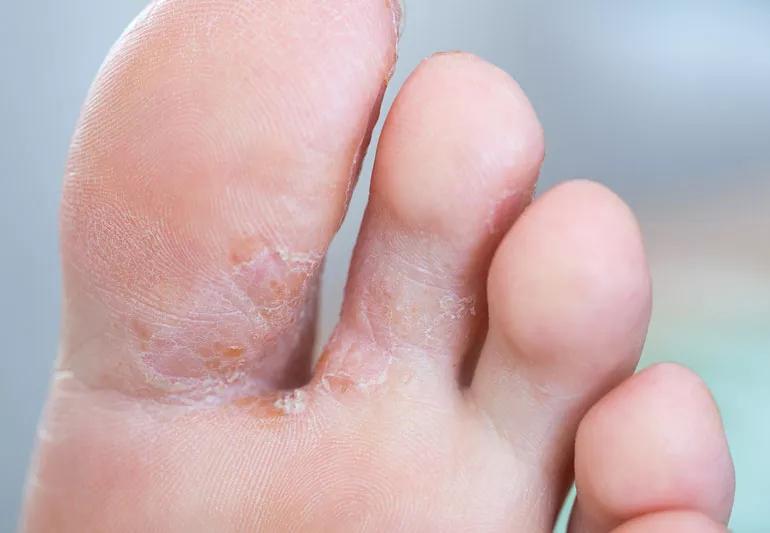
The itching and burning of athlete’s foot is a common enemy lurking throughout locker rooms. But you can get this foot condition even if you haven’t been in a gym. It includes two separate infections: one that affects the skin on your feet, which is classic athlete’s foot, and another infection that affects your toenails, called mycotic nails.
Cleveland Clinic is a non-profit academic medical center. Advertising on our site helps support our mission. We do not endorse non-Cleveland Clinic products or services. Policy
They’re both very common because exposing yourself to the fungus that causes them is easy to do. Dermatologist Pamela Ng, MD, explains what you need to know about this common condition and top ways to stop it in its tracks.
Athlete’s foot is a highly contagious fungal infection that is part of a larger family of fungal infections affecting the skin and nails. These include “jock itch” and ringworm. Because it’s a fungus, it thrives in the moist, warm climate of your gym locker room, bathrooms and showers. You get athlete’s foot by direct contact with contaminated surfaces, most commonly within these shared communal spaces, but also brewing inside your sweaty, tight-fitting shoes.
Symptoms of athlete’s foot include a scaly, itchy rash on the feet and between toes. Mycotic nails appear discolored to a brownish-yellow and the nails become thick, brittle and separated from the nail bed. These things are more than just a cosmetic embarrassment; for some, they can become a serious health concern.
“If you have diabetes or are immune-compromised, it’s important to get foot fungus issues under control,” says Dr. Ng. “The fungal infections can cause breakdown of the skin and lead to conditions like cellulitis or foot ulcers.”
Foot fungus won’t just go away on its own, Dr. Ng says. “If you think you have foot or toenail fungus, see your dermatologist,” she says. There are several tests that your dermatologist can perform to identify exactly what’s going on.
“It’s important to be aware that there are other diseases which can cause nail changes,” she says. “For example, we do see things like squamous cell skin cancers in the nail beds and even melanomas, which have a brownish or blackish discoloration.”
The best treatment for fungal nail infections is a prescription that your dermatologist can prescribe that you take every day for two-to-three months. The pill is not for everyone, since oral antifungals can interact with other medications and can affect the liver.
Fortunately if you don’t want to or can’t take a pill, there are topical solutions to treat nail fungus. Although topical medications are desirable because of the low risk of side effects and interaction with other medications, they have much longer treatment regimens. Generally, topical medications have a lower clearance rate compared to oral pills.
“Newer topical antifungals including Efinaconazole and Tavaborole have better penetration of the nail plate and so they work better compared to older topical medications,” says Dr. Ng. She says the topical medications work best if you only have partial nail involvement.
Lasers are approved by the FDA to temporarily increase the amount of clear nail. However, the cure rates are lower than oral medications and topical solutions.
Photodynamic therapy has been used for fungal nail infections with moderate success. This involves applying a photosensitizing agent then exposing it to a light source. Dr. Ng says this procedure may not be covered by your insurance. More studies are needed to determine the true outcome of photodynamic therapy in treating onychomycosis.
“Unfortunately, even if your nail is cleared after treating it, fungal infections in the nails have a tendency to recur, especially if you’re predisposed to this type of infection,” says Dr. Ng. Using a topical antifungal cream regularly after the fungal nail has been treated can prevent recurrence of the fungal infection. She says it’s also helpful to apply an antifungal spray or powder in your shoes once you have been treated to reduce the risk of recurrence.
If your foot fungus infection is only on the skin of your feet, then Dr. Ng recommends an over-the-counter antifungal cream.
“I like the creams better than the sprays or powders because the creams will completely coat the foot and treat the entire skin surface,” she says. “Make sure that you get in between the toes, because that’s really where we see the most problems in those warm, moist areas.”
The best way to combat foot fungus is to reduce your exposure to it. There are simple things you can do to prevent from contracting foot and nail fungus.
The greatest danger of not treating the foot or toenail fungus is that it can spread to other parts of the body, such as the hands and groin.
If for some reason you can’t treat your toenails or your feet right away, at least use an antifungal topical cream on the surrounding skin, Dr. Ng says. That will help keep it from spreading and keep the skin intact.
Learn more about our editorial process.
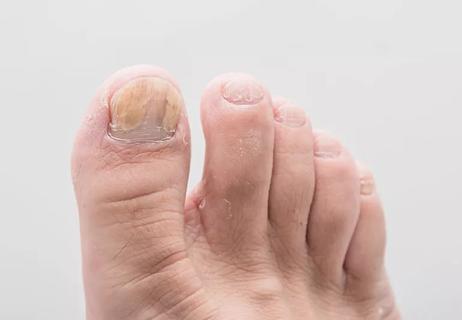
Nail psoriasis and nail fungus have a lot of similarities, but one is a result of an infection and the other is inflammatory
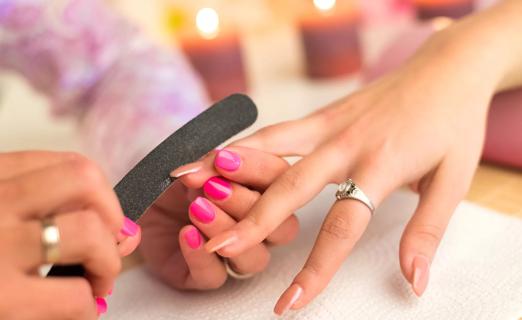
Before your next manicure, weigh the reward against the risk of infection, irritated skin and damaged nails

Safety, hygiene and technician training are among the biggest benefits of a ‘medi pedi’
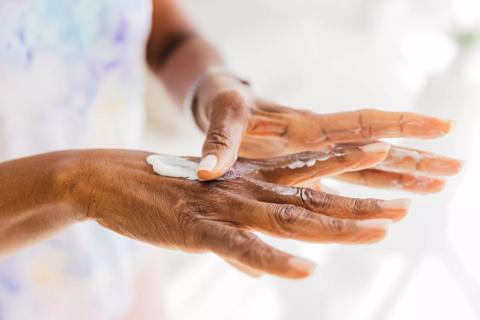
To help keep your mitts feeling and looking their best, moisturize, exfoliate, wear sunscreen and eat a healthy diet

Go ahead and get goopy to help boost hydration and repair damaged skin
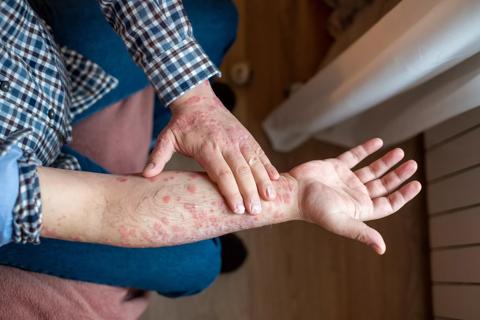
The common skin condition isn’t contagious, but it can pop up anywhere on your body during a flare
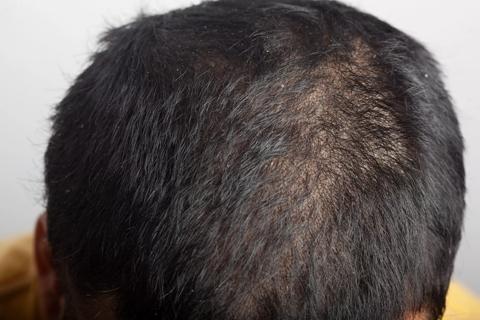
Calm an itchy scalp by using medicated shampoo, avoiding blow-drying and resisting the urge to scratch
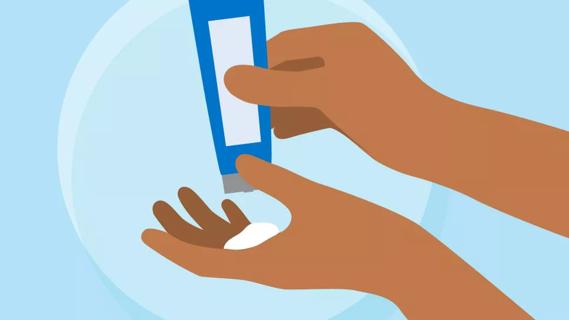
Caused by inflammation, psoriasis itch can be managed with a variety of treatments, like moisturizing and taking cooler and shorter showers

Your metabolism may torch 1,300 to 2,000 calories daily with no activity

A gentle touch in all the right places may help drain your sinuses